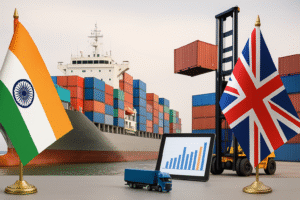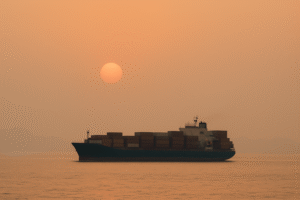
In an era where global connectivity drives commerce and trade, the realm of international logistics stands as the silent yet essential backbone of cross-border exchange. From the bustling ports to the airspace above, international logistics orchestrates the seamless movement of goods and services across nations. But what exactly is international logistics, and what intricacies lie within its domain?
Defining International Logistics
International logistics, at its core, revolves around the intricate management of import and export activities. It’s the finely tuned mechanism that ensures goods traverse borders efficiently and safely. These exchanges are orchestrated through various modes of cross-border transport, underpinned by established logistical methodologies. The primary aim? To streamline the movement of goods from point A to point B across different countries.
Navigating the Specifics
Delving deeper, the world of international logistics reveals a landscape characterized by its complexities and nuances:
- Collaborative Partnerships: International exchanges necessitate collaboration among a plethora of stakeholders. From manufacturers to carriers, meticulous planning and information exchange are imperative for smooth operations.
- Multimodal Operations: Given the diverse nature of goods and the varied landscapes they traverse, international logistics often entails multimodal transportation. This demands an acute understanding of cargo specifications and packaging requirements.
- Regulatory Compliance: Import and export activities are bound by a web of legal regulations and conventions. Navigating these legal frameworks ensures seamless clearance and adherence to international standards.
- Cost Optimization: Rigorous management of logistical costs is crucial for efficiency and profitability. From minimizing handling operations to optimizing service provider fees, every penny counts in the world of international logistics.
- Risk Mitigation: Security risks loom large in the realm of international trade. From perishable goods to hazardous materials, mitigating risks through stringent handling procedures and comprehensive insurance policies is paramount.
Key Considerations
When delving into international logistics, several critical factors demand attention:
- Product Specificities: The nature of goods, from perishables to hazardous materials, brings unique challenges and regulatory requirements.
- Documentary Obligations: Compliance with various licenses, certificates, and customs declarations is non-negotiable in international trade.
- Tariff Knowledge: Understanding applied tariffs is essential for navigating the intricacies of international trade agreements.
- Cultural and Environmental Factors: Beyond the logistical realm, geographical, climatic, and cultural considerations play a significant role in international operations.
- Adaptability: Flexibility in response to geopolitical events and changing circumstances is crucial for maintaining operational efficiency.
Practical Applications
In practice, international logistics unfolds as a meticulously orchestrated symphony:
- End-to-End Solutions: From tailored packaging to strategic dispatch methods, every aspect is fine-tuned for optimal efficiency.
- Strategic Partnerships: Collaborating with reliable logistical providers ensures seamless execution of transportation, handling, and customs clearance operations.
- Transparent Communication: Real-time tracking and situational reports facilitate seamless coordination and traceability throughout the supply chain.
- Cost Control: Regular audits and invoice verification ensure transparency and cost optimization.
International Logistics in Numbers
The statistics paint a vivid picture of the sheer scale and impact of international logistics:
- Maritime transport dominates, accounting for 80% of global goods transportation.
- France ranks 7th in container traffic among EU countries, with 72% of imports arriving via maritime routes.
- Customs declarations in France number around 50,000 daily, with a high digitalization index of 87%.
- Air transport plays a significant role, with Roissy being the 2nd largest freight airport in Europe.
In understanding international logistics, one crucial document plays a pivotal role: the Bill of Lading. This document serves as a contract of carriage and a receipt of goods, detailing the shipment’s specifics and terms of transportation. It encapsulates the essence of international logistics by providing a tangible record of the goods’ journey across borders, ensuring accountability and smooth transitions between parties involved. Still feeling overwhelmed and don’t know whom to trust Request a Callback from our Expert !








1 thought on “Unlocking the World: Understanding International Logistics”
Saudi Arabia’s strategic geographical position at the crossroads of important international trade routes places it at the epicentre of global logistics.